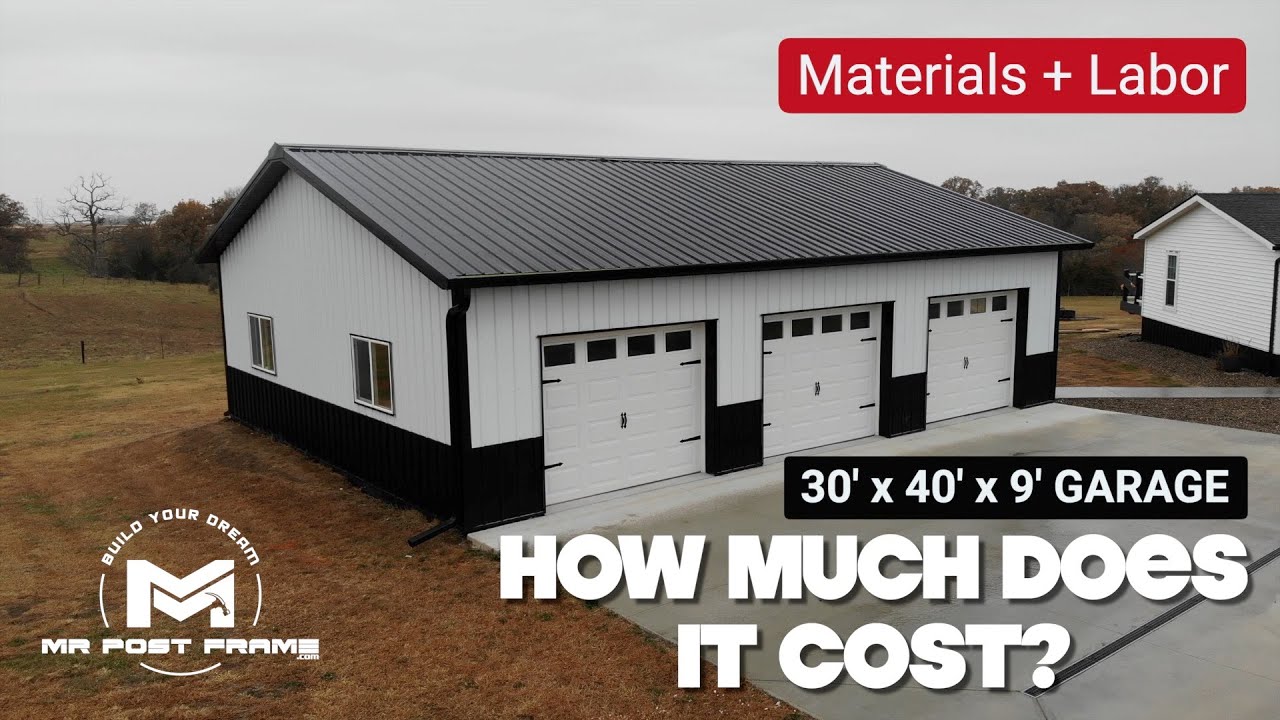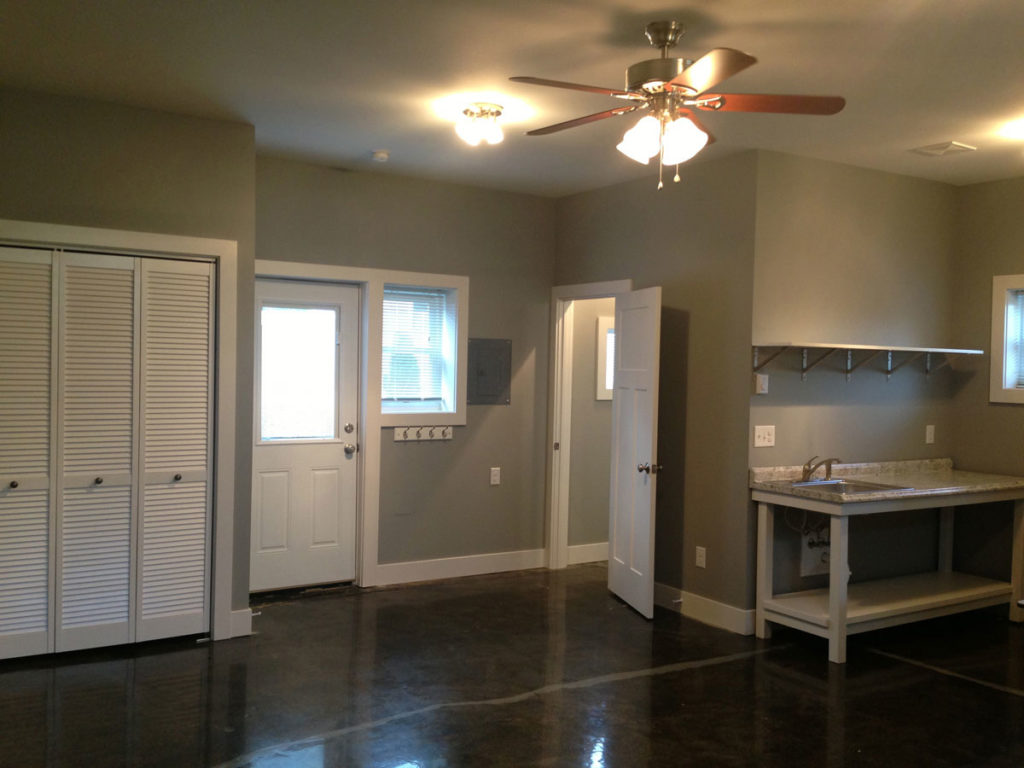
Garage shelving can help increase storage space in your garage. There are many options for garage shelving. But it is essential to select a unit that is sturdy enough to store the items you have in your garage. The right material choice is crucial when selecting a shelving unit. Certain materials are more durable than others and can withstand spills and stains better than others.
Garage shelving can be built from metal, particle board, or MDF. Particle board is light but more likely to stain than steel. A heavier-duty shelving system may be better suited for heavy items like tools and equipment.
Wall-mounted shelves make it easy to maximize your storage area. Mounted shelves can be attached to your garage's walls by using brackets. These brackets can be made from metal and attached to your garage wall using studs. Mount the shelves at least 16 inches above the floor, and at least 20 inches apart. Ceiling-mounted shelving systems are also available that project downward. These shelves are lighter than a standalone unit so are easier to move.

Freestanding units are made of wood or metal and can be mounted on the wall or ceiling. They are more flexible than other types of shelving, though they take up floor space. You'll need a drill, and tools to install them.
Steel wire and chrome mesh are the most common materials used to make adjustable rail shelves. The vertical metal tracks are mounted in the wall, and the brackets fit into the slots. The shelves are adjustable, which allows you to add and remove items as needed. They are typically designed to store heavy objects, but they can be easily moved to create more storage space.
Particle board is a good choice for shelving. But, it can stain if a can full of engine fluid leaks. Metal shelving doesn't absorb chemical and is nonporous. It can be used to store paint and other chemically-based products.
Particle board and MDF are a good choice if you don't need to hold heavy items, but don't want to sacrifice structural integrity. Both are robust and easy-to-assemble. The powder coating helps to protect these units from dents and scratches.

MDF and particles board are usually lighter than metal. However, their weight capacities aren't much higher. Plastic shelving is easier to move and cheaper than metal. Plastic shelving is cheaper than MDF and easier to clean, so it might not be the best choice for a messy or wet garage.
You can also purchase an adjustable rail shelf. This kind of shelving is flexible too, but you'll need studs to attach the track. Many of these shelves aren't suitable for drywall over concrete, though.
Garage shelving costs will vary depending upon the materials used. The material that you decide to use can affect your energy bills as well. Be sure to use a temperature-controlled space if you plan to store food or hazardous materials. You should also cover the shelves to keep spills and stains out.
FAQ
Is $30000 sufficient for a kitchen remodeling project?
Depending on your budget, a kitchen renovation could cost you anywhere from $15000 to $35000. You can expect to spend more than $20,000. If you are looking for a complete overhaul of your kitchen, it will cost more. If you are looking to upgrade appliances, paint or replace countertops, it is possible to do this for less than $3000.
The average price for a full-scale renovation is usually between $12,000-$25,000. There are ways you can save money without sacrificing on quality. One example of this is installing a sink, instead of replacing the old one. It costs about $1000. You can even buy used appliances for half of the price of new.
Kitchen renovations are more time-consuming than other types of projects. Plan accordingly. You don't want to start working in your kitchen only to realize halfway through that you're going to run out of time before completing the job.
It is best to start early. Begin by looking at all options and getting estimates from multiple contractors. Then narrow your choices based price, availability, quality, or both.
After you have found potential contractors, get estimates and compare prices. The lowest-priced bid isn't always the best choice. It's important to find someone with similar work experience who will provide a detailed estimate.
When calculating the final cost, remember to add all extras. These may include labor or material charges, permits and so forth. Be realistic about the amount you can afford, and stick to your budget.
Don't be afraid to tell the contractor what you think about any of the quotes. If you don’t like the first bid, let the contractor know and offer to give it another chance. Don't let pride stand in the way of saving money.
What is included in a full-scale kitchen remodel?
A full kitchen remodels more than just a new sink and faucet. There are also cabinets, countertops, appliances, lighting fixtures, flooring, plumbing fixtures, and much more.
Homeowners can remodel their kitchens completely without needing to do major work. The contractor and homeowner will be able to do the job without any demolition, which makes the project much easier.
Renovating a kitchen can involve a range of services including plumbing, heating and cooling, painting, and even drywall installation. Depending on the extent of the kitchen remodel, multiple contractors may be required.
A team of professionals is the best way to ensure that a kitchen remodel runs smoothly. Kitchen remodels are complex and can be delayed by small issues. You should plan ahead and prepare a backup plan for any unexpected situations if you decide to DIY.
Are there any savings on a remodel of a bathroom or kitchen.
Remodeling a kitchen or bathroom is a costly undertaking. It is worth considering the amount of money you spend on your energy bills each monthly.
A small upgrade could save you thousands of dollars each year. A few simple changes, such as adding insulation to walls and ceilings, can reduce heating and cooling costs by up to 30 percent. Even a small addition can increase comfort and resale values.
When planning for renovations, it is important to select durable and easy-to-maintain products. Materials like porcelain tile, solid wood flooring, and stainless-steel appliances will last longer and need fewer repairs than vinyl countertops.
It is possible to reduce utility costs by replacing older fixtures with more modern models. Installing low-flow faucets or showerheads can cut water use by up to 50%. By replacing inefficient lighting with compact fluorescent lamps, you can reduce electricity consumption up to 75%.
How do I know if my house is in need of a renovation?
First, check to see whether your home was updated in recent years. A renovation might be in order if the home has not been updated for some time. On the other hand, if your home looks brand-new, then you may want to think about a remodel.
The second thing you should check is whether your home is in good condition. You should inspect your home for holes, peeling wallpaper, and broken tiles. If your home is in good condition, it might be worth considering a remodel.
You should also consider the overall condition of your house. Are the structural integrity and aesthetics of your home? Do the rooms look clean? Are the floors spotless? These questions are critical when deciding what type of renovation you should do.
How long does it take for a bathroom remodel?
It usually takes two weeks to remodel a bathroom. This can vary depending on how large the job is. A few small jobs, like installing a vanity or adding a bathroom stall, can be done in one day. Larger jobs like removing walls or installing tile floors and plumbing fixtures can take several hours.
The rule of thumb is that you should allow three days for each room. So if you have four bathrooms, you'd need 12 days total.
What is the cost of completely renovating a kitchen?
You might wonder how much it would be to remodel your home if you have been considering the idea.
The average cost of a kitchen remodel between $10,000 and $15,000. However, there are ways to save money while improving your space's overall look and feel.
Planning ahead is a great way to cut costs. This includes choosing a style and color scheme that suits your lifestyle and finances.
You can also cut costs by hiring an experienced contractor. A professional tradesman knows exactly how to handle each step of the construction process, which means he or she won't waste time trying to figure out how to complete a task.
It's a good idea to evaluate whether your existing appliances should be replaced or preserved. Replacing appliances can add thousands of dollars to the total cost of a kitchen remodeling project.
Another option is to consider purchasing used appliances. Because you don't need to pay for installation, buying used appliances can help you save some money.
You can also save money by shopping around when buying materials and fixtures. Many stores offer discounts for special occasions like Cyber Monday or Black Friday.
Statistics
- Following the effects of COVID-19, homeowners spent 48% less on their renovation costs than before the pandemic 1 2 (rocketmortgage.com)
- According to a survey of renovations in the top 50 U.S. metro cities by Houzz, people spend $15,000 on average per renovation project. (rocketmortgage.com)
- Attic or basement 10 – 15% (rocketmortgage.com)
- About 33 percent of people report renovating their primary bedroom to increase livability and overall function. (rocketmortgage.com)
- 57%Low-end average cost: $26,214Additional home value: $18,927Return on investment: (rocketmortgage.com)
External Links
How To
How to Remove Tile Grout From Floor Tiles
Tile grouting is something that most people don't even know they have. It is used in sealing joints between tiles. There are many different types of grout today. Each has its own purpose. We will demonstrate how to remove grout from tile floors.
-
Before you can begin the process, ensure that you have all necessary tools. It is best to have a grout cutter, grout scraper, and some towels.
-
You will now need to clean off any dirt and debris that may have been under the tile. You can use the grout cutter to remove grout from the tiles and scrape off any remaining pieces. You should not damage any tiles.
-
After cleaning everything, take out the grout scraper. Use it to clean up any grout left behind. Step 4 can be completed if you have no grout.
-
You can now move on to the next stage after you have completed all your cleaning. You can now take one of the rags, and soak it in some water. The rag should be completely dampened. To ensure that the rag does not absorb water, dry it.
-
The wet rag should be placed on the joint between the tile and the wall. The grout will begin to crumble if you press down hard on the rag. Slowly pull the rug towards you, then continue pulling the rag back and forth until the grout has been removed.
-
Continue to repeat steps 4 and 5, until all grout has been removed. Rinse the ragout. Repeat the process if necessary.
-
When you are done removing grout, clean the tiles using a damp cloth. Allow to dry completely.